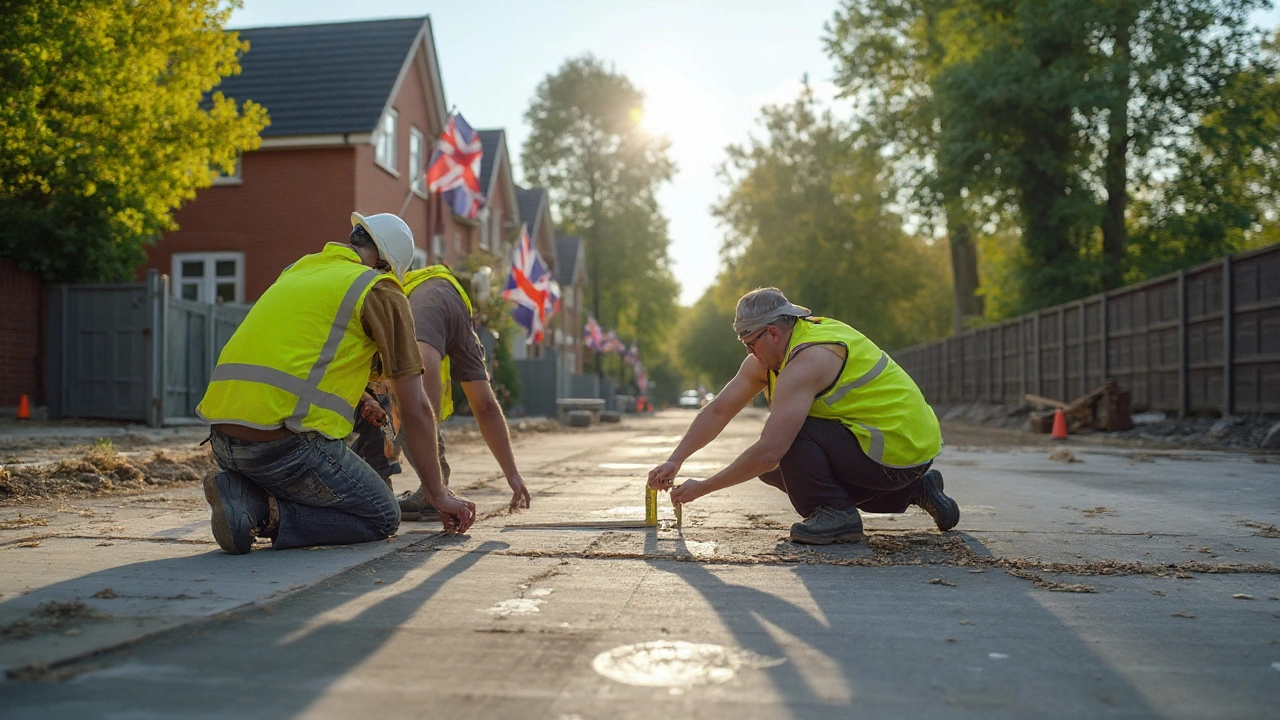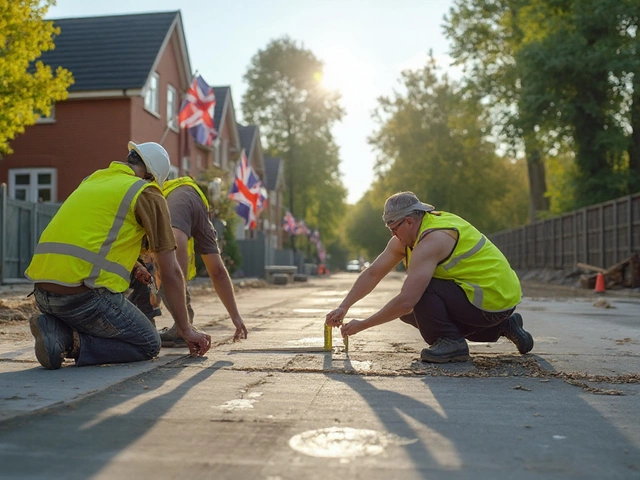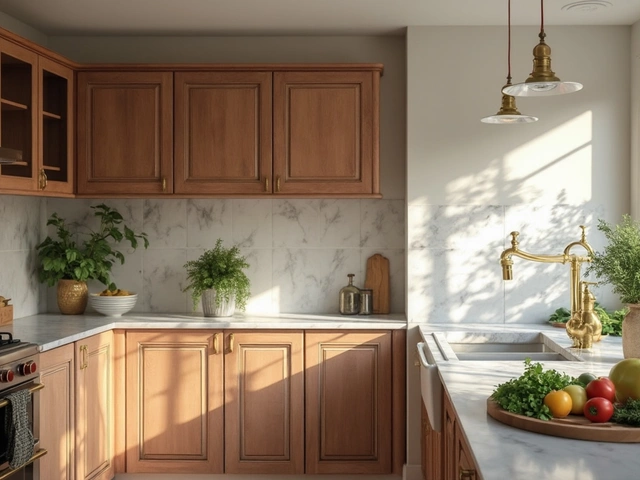Ever noticed how some buildings just stand up straighter than others? Like, you walk past a house and it seems perfectly put together, not off-kilter or a little crooked. That’s no accident. There’s a trick behind making things square when you’re building from scratch, and it’s just three numbers: 3, 4, and 5. The 345 rule is as old as the pyramids, but still keeps new builds from slumping over like tired dogs. If you’re tackling a new foundation or just wondering how pros keep structures from going lopsided, this little rule is the secret sauce.
What Is the 345 Rule and Why Does It Matter?
Let’s strip it down: the 345 rule is a shortcut to get right angles without fancy gear. You measure three units on one side, four on the other—units could be feet, meters, inches, whatever fits your job—and the diagonal across should measure five units if your corner is a true 90 degrees. It’s straight-up geometry, coming from the Pythagorean theorem (you remember, that one math thing in high school), and builders have been using it for centuries.
So why does this matter for foundations? It matters because the strength and stability of any building start with how square those first layouts are. If your corners are off, everything above gets wonky. A foundation that’s even just a little crooked means doors stick, walls crack, and floors creak. The 345 rule keeps things square and tight, which is what you want if you care about the life of your building.
It’s so dependable and simple that you hardly need high-tech tools—just a tape measure or even a piece of string will do. In 1851, the Great Exhibition’s Crystal Palace was built using the same principle for its crisp glass edges. The real kicker? Even massive projects like skyscrapers and bridges (think the Brooklyn Bridge) begin with these basic checks before the big stuff starts.
Residential or commercial—concrete mat or simple wood post—the rule is always the same. What blows people’s minds is that a trick dreamed up some 4000 years ago still beats a laser level when the batteries die on a wet day. Faster, too. The 345 rule remains the absolute go-to for carpenters, surveyors, and even DIY enthusiasts looking to frame a shed or pour a patio. You mess this up, and the whole project can go sideways, literally. That’s why pros never skip it, and why you shouldn’t either.
How the 345 Rule Works: Breaking Down the Process
So, how do you actually use this in the real world? First, mark the point where you want the corner. From that, measure out three feet along one edge, and four feet along the other. Mark both spots. Then, measure the distance between these two marks. If it’s five feet, your corner is ninety degrees—you nailed it. If it’s not five, something’s off and you’ll need to shift your marks until you get it spot on.
Sounds straightforward, but little mistakes can throw you: don’t let the tape sag, make sure your ground is flat, and double-check your marks. Not picky enough? Well, even an inch off now means a wall out at the end—a wall that never lines up properly. Framing carpenters use this method on everything: walls, decks, driveways, fence posts, and especially foundations. It becomes second nature after a while, almost like muscle memory.
Here’s a pro tip: if you’re working on a big build, just scale it up. Use 6, 8, and 10 feet. Or even 9, 12, and 15 feet if you want to stretch precision over a bigger area. As long as the ratio matches (three, four, five), you'll get square right angles. And it doesn’t matter what your units are. Builders in New Zealand, the US, Japan, all use this—it works across continents because Pythagoras doesn’t care about borders.
Say you’re laying out a foundation for a new house. After you’ve staked the rough perimeter, grab a helper. Hold the tape tight for accurate marks. If you’re doing it solo, measure and trace your string, then check your diagonal. Some folks use chalk lines or temporary wood strips to keep the marks from moving. Don’t rush—take your time now to avoid fixing problems later. Once it’s set, your forms are ready for concrete, and you can sleep knowing your build’s going up straight.
Here’s another handy use: fixing an old crooked pad. Whether you want to lay new tile or frame a wall in a basement, this trick shows instantly how “off” something is. Mark three and four feet down each edge from a corner, check the diagonal, and you’ll spot right away if it’s not a real right angle. No need for advanced math—just a tape and some patience.

Common Pitfalls: Rookie Mistakes to Avoid with the 345 Rule
A surprising number of DIYers and even a few contractors mess up the basics. First, always pick the longest possible measurements your site allows. Going with three and four inches means a single small error has a big impact at the end of the wall. Longer measurements average out tiny goofs so your final angle comes out closer to perfect. If you’ve got space, mark 15, 20, and 25 feet, especially on long foundations.
Then there’s the issue of tape sag. It’s almost invisible, but a tape measure pulled loose or that dips in the middle means your five-unit check comes out wrong. If you’re alone, use a string—not only does it stay in place, but tension helps keep things dead straight. Pull chalk lines tight and snap to mark, so you’re not guessing where the points are. The little stuff really makes a difference here.
Another mistake? Ignoring the ground. Lumpy grass or dirt means your measurements aren’t in a straight line horizontally. If there’s a hill or dip between your marks, that diagonal gets longer and throws everything off. On uneven ground, it sometimes pays to dig a temporary pathway for your tape or string so you’re measuring point-to-point directly, not over bumps like a roller coaster.
Don’t forget about weather. Hot days can stretch tape measures, and cold ones shrink them. Professionals keep a dedicated tape for layout work and replace it when it gets too banged up or warped. It sounds obsessive, but there’s nothing more painful than fixing crooked walls later. Make sure your helper is on the same page—miscommunication leads to “almost square,” which just isn’t good enough.
Sometimes, folks get cocky with technology and think, "The laser will fix it." But lasers can drift, hit smudges, or just run out of battery mid-job. Even today, veteran builders run both a laser check and a 345 check—nothing replaces a good, old-fashioned right angle when the project’s on the line.
Why the 345 Rule Endures: Tips from the Pros
Here’s the thing: the 345 rule is not just for basic rectangle shapes. It adapts to any corner you need dead-on square. Once your first angle reads true, you can repeat the process on each corner, working your way around the site. That’s how framing crews set up big slabs or complex L-shaped buildings—one accurate corner sets the tone for the rest.
Some older crews love using a “story pole”—a long stick marked at three, four, and five (or their scaled equivalents). It saves time and helps double-check everyone’s measurements. Even if apps and digital levels are getting fancier, most job sites still have at least one hand-marked pole tacked up on a wall for quick referencing.
Looking to beef up your game? Add a checklist: always get a second set of eyes, measure more than once before pouring concrete, and never settle for "good enough." Most framing screwups trace back to ignoring these small rituals. Don’t let rushed timelines convince you to skip old tricks—there’s a reason veteran supervisors still preach this stuff to apprentices.
A quick curiosity: archaeologists discovered that ancient Egyptians used a knotted rope with 12 evenly spaced knots to create perfect right angles—literally the 345 rule. Every major civilization, from Rome to the Maya, wrote similar tricks into their building manuals. Today’s building codes don’t mandate the 345 rule, but inspectors will raise eyebrows at a visibly crooked form. You pass those checks and sleep better if you’ve squared your corners right from the start.
At the end of the day, the 345 rule is equal parts simplicity and reliability. If you’re laying out anything new—a chicken coop, a big deck, an apartment tower—don’t even think about guessing your corners. You want straight lines, doors that close, and neighbors marveling at your dead-level floors. As long as humans keep building, this one bit of math is going to stick around. It’s not fancy, but it gets the job done, every time.






